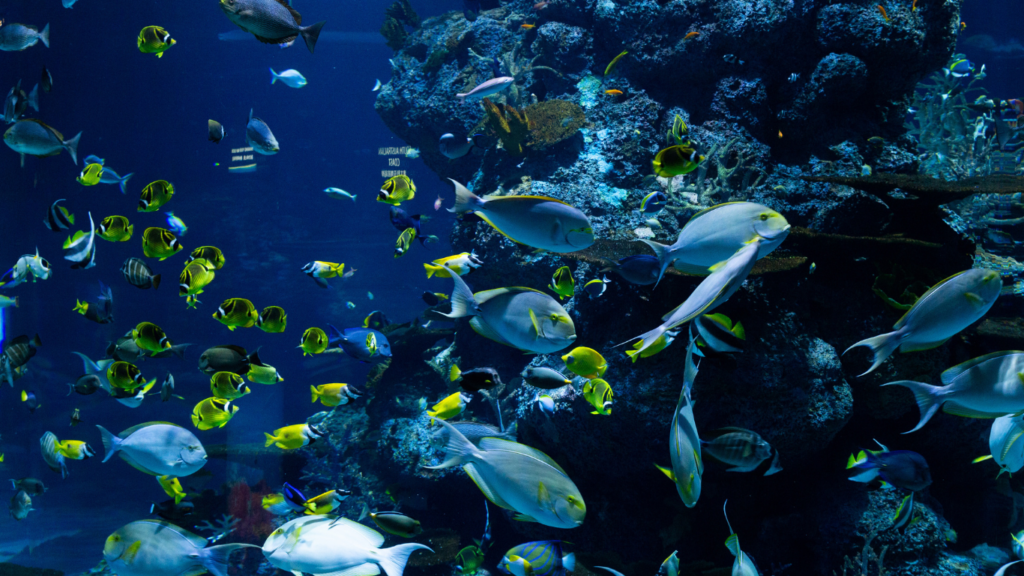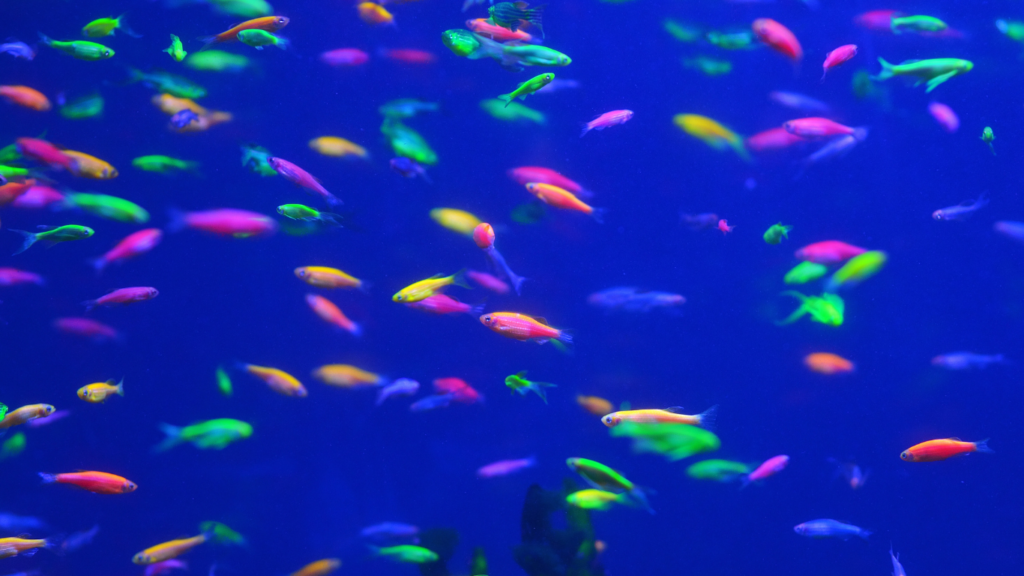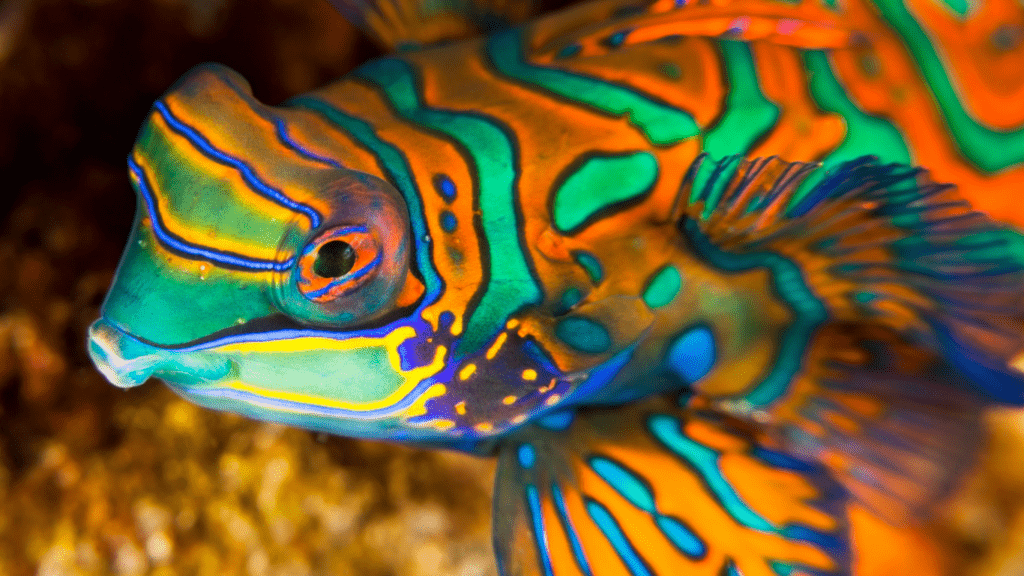Exploring Bioluminescence in Marine Life
Bioluminescence occurs naturally in many marine organisms, including:
- fish
- jellyfish
- squid
The glow stems from a chemical reaction where luciferin oxidizes, producing light. Nearly 76% of deep-sea animals exhibit this phenomenon, serving various purposes like attracting prey or signaling mates.
Anglerfish use bioluminescence to lure prey. Their bioluminescent lure, located above their mouths, mimics smaller organisms in the dark depths. Lanternfish, another example, use light organs to communicate and avoid predators by blending with ambient light.
Certain squid species emit light as a defense mechanism. Firefly squid create bursts of blue light, confusing predators by masking their movements. Comb jellies also produce light, though the iridescent glow they emit results from refracted light rather than true bioluminescence.
Enzymes and light-producing proteins are crucial for bioluminescence. Luciferin, the substrate, reacts with luciferase, the enzyme, in the presence of oxygen and typically ATP. Some organisms rely on symbiotic bacteria to produce light, like in the Hawaiian bobtail squid.
This adaptation primarily benefits creatures in low-light environments. In shallow waters, bioluminescence is less frequent, with the majority of luminous species found below 200 meters.
What Are Glow-in-the-Dark Fish?
Glow-in-the-dark fish, also known as bioluminescent fish, produce light through natural processes. These fascinating creatures illuminate the dark depths of the ocean using specialized adaptations.
Understanding Bioluminescence
Bioluminescence refers to light produced by a chemical reaction. It typically involves luciferin, a light-emitting molecule, and luciferase, an enzyme that triggers the reaction. When oxygen combines with luciferin in the presence of luciferase, it creates light. This phenomenon occurs in over 1,500 known fish species and is most common in deep-sea environments.
Many glow-in-the-dark fish, such as anglerfish and dragonfish, use bioluminescence strategically. Some lure prey with glowing appendages, while others communicate or camouflage themselves. A few species, including flashlight fish, rely on symbiotic bacteria to produce their light, integrating other organisms into their luminous systems.
Common Features of Bioluminescent Fish
Bioluminescent fish share several traits adapted for survival in lightless waters.
- Photophores: These specialized light organs, seen in species like lanternfish, emit light for signaling or attracting prey.
- Deep-Sea Adaptations: Glow-in-the-dark fish often have large eyes or highly sensitive retinas, enabling them to detect faint light.
- Counter-Illumination: Many species, such as cookiecutter sharks, match their light’s intensity to surrounding conditions, blending against the ocean’s surface from a predator’s view below.
- Size Variations: Bioluminescent fish range widely in size, from the one-inch hatchetfish to larger predators like gulper eels that also display light-producing capabilities.
Each feature corresponds to specific ecological functions, ensuring survival in the high-pressure, low-light zones of the ocean.
The Most Bioluminescent Catches on Record

Bioluminescent fish capture both scientific interest and public fascination. Some species stand out for their impressive adaptations and extraordinary glow.
Unique Species and Their Glow
Anglerfish dominate bioluminescent discussions with their glowing lures. Their bioluminescence helps attract prey in pitch-black waters through a lure containing symbiotic bacteria. Another notable example is the flashlight fish, which uses light-emitting organs near its eyes to evade predators or communicate with others. Researchers have identified nearly 47 distinct flashlight fish species.
Lanternfish, accounting for roughly 65% of deep-sea fish biomass, exhibit complex light displays for courtship and defense. Hatchetfish, with photophores on their undersides, use counter-illumination to outmatch predators’ gaze. Dragonfish, armed with a unique red light-emission ability, target prey invisible to most other deep-sea dwellers. These adaptations emphasize their survival-driven evolution.
Record-Breaking Bioluminescent Discoveries
The 2016 discovery of a massive Cyclothone shoal in the Pacific revealed the world’s densest bioluminescent fish aggregation. This genus comprises bristlemouth fish, considered one of Earth’s most abundant vertebrates. Such findings highlight their ecological significance.
In 2020, scientists recorded the largest glow-up of cookiecutter sharks off the coast of New Zealand. These sharks, measuring up to 22 inches, glow on their ventral sides for camouflage, yet their glowing upper bodies make them one of the rare bioluminescent predators identified.
Perhaps the most stunning example came in 2015 when researchers documented a 2.5-foot-long gulper eel. Its glowing, expandable jaw earned it the nickname “pelican eel.” Such catches reinforce the ocean’s endless mysteries.
Why Do These Fish Glow?
Bioluminescent fish emit light for functions vital to their survival in the deep sea. This mesmerizing glow serves various roles tied to survival, reproduction, and environmental adaptation.
Survival and Communication
Bioluminescence enhances survival through attraction, defense, or camouflage. Predatory species like the anglerfish use their luminescent lure to mimic prey, drawing victims close enough to consume. Others, such as the hatchetfish, employ counter-illumination to blend with surface light, avoiding predators from below. Flashlight fish use their light organs to signal potential mates or confuse predators by flashing patterns. These adaptive uses of light make communication and survival possible in the dark ocean depths.
Environmental Influences
The deep sea’s physical and biological conditions shape light production in bioluminescent fish. Extreme darkness and high pressure demand energy-efficient adaptations, with many species evolving photophores to create or amplify their glow. Symbiotic bacteria, thriving in these environments, contribute to light production in host fish like the flashlight fish. Seasonal changes and predator-prey dynamics also drive glow usage, as bioluminescence can vary in intensity or pattern to suit feeding cycles or evade new threats. Environmental factors directly impact both when and how these fish utilize their light.
Glow-in-the-Dark Fish and Human Fascination
Glow-in-the-dark fish have captivated humans for centuries, blending natural wonder with scientific intrigue. These bioluminescent creatures inspire both hobbyists and researchers to explore their unique adaptations and potential applications.
Popularity in Aquariums
Glow-in-the-dark fish are increasingly popular in home aquariums, offering hobbyists a seamless blend of biology and aesthetics. GloFish, genetically modified zebrafish that fluoresce under black lights, are a prominent example. Introduced in the early 2000s for environmental research, they now adorn aquariums worldwide for their vibrant colors.
Retailers provide various bioluminescent fish species, including anglerfish and flashlight fish, for experienced marine aquarists. Proper care involves simulating deep-sea conditions, with controlled lighting and water chemistry. This appeal fosters interest in marine life and promotes conservation awareness.
Phenomenon in Modern Research
Scientists study glow-in-the-dark fish to uncover critical adaptations for survival in extreme environments. Their bioluminescent mechanisms aid ongoing advancements in biomedical imaging, environmental monitoring, and energy-efficient lighting technologies.
For instance, researchers analyze luciferin-luciferase reactions in anglerfish and lanternfish to improve fluorescence-based diagnostic tools. Additionally, bioluminescent fish help assess ecosystem health, as declining glow patterns in lanternfish populations signal oceanic disruptions.
Insights gained from these studies address global challenges, reinforcing humanity’s fascination with these natural marvels.





